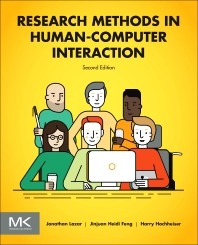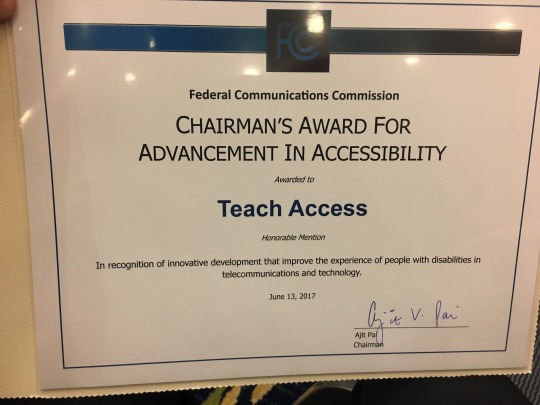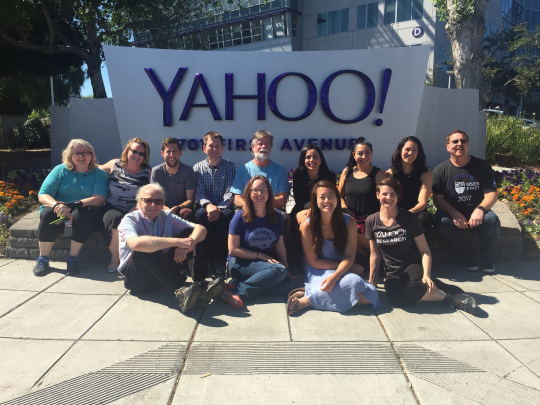#yahoo accessibility

Alt Text: Yahoo Mail
By Mike Shebanek, Yahoo Senior Director of Accessibility
You may have heard that we just launched our new Yahoo Mail desktop experience that makes it even easier to access and organize all of the important information in your Inbox. The new version of desktop Mail has been completely redesigned from the ground up, sits on our latest tech stack, and is fast, reliable, and intuitive to use. It however also takes a huge leap forward for accessibility, with many user interface and assistive technology compatibility improvements.
Yahoo’s Accessibility team and the Yahoo Mail team have been closely working together from the beginning of this project to identify and address previous barriers to accessibility and efficiency, and the teams have poured themselves into this new release.
With the new Yahoo Mail experience, NVDA and VoiceOver screen reader users have access to the full desktop Yahoo Mail experience including threaded message viewing, stationery, animated gifs, emoji, and more. The Inbox is also now presented as a table which makes it faster and easier to use and allows you to control what information you hear about each message. For example, screen reader users can find or mark messages as read or unread, delete or star them, and know how many messages are in a thread all from the Inbox without first having to open the message.
In addition to a new beautiful design that reduces visual clutter and improves responsiveness, we’ve also updated the set of visual themes including a new “dark” theme that provides high contrast using a dark background with bright text. This is helpful for light-sensitive and low-vision users. There’s also a new Inbox spacing option that reduces the need to pan around the screen when using high magnification. Of course, Yahoo Mail is also fully navigable using a keyboard alone (i.e. “tab key navigation”).
The images below show the default (black on white) Yahoo Mail theme and the new dark high-contrast theme.


By Mike Shebanek, Senior Director, Accessibility
Engaging users, actively observing, and then incorporating feedback into product design is central to Yahoo’s product development work. In addition to routinely performing small group or one-on-one user research that includes people with disabilities, a method of engaging users and gathering feedback unique to the Yahoo User Experience Research and Accessibility (UXRA) team is something we call User Nights.

Image caption: Dozens of Yahoo engineers wearing themed T-shirts sitting side by side with volunteers, observing them using Yahoo mobile apps on their smartphones
User Nights pair a user-volunteer one-on-one with a Yahoo engineer who observes how they complete a set of familiar tasks. It’s unusual for companies to have user researchers at all (it’s a function that’s often outsourced to consultants) but for those that do, it’s not so unusual to conduct observational research and report findings to a product team. Yahoo does this routinely. But our User Nights are unique in that we also arrange for the engineers who are actively engaged in building a product to sit side-by-side for over an hour observing how people are using it—with no coaching. They’re able to experience first-hand what’s working, what’s not, and the creative and unexpected ways people are using their products. Feedback and lessons learned from these experiences find their way directly back into the next release.
As Yogi Berra once said, “You can observe a lot just by watching.”

Image caption: The cover of the new 2nd edition of the textbook, “Research Methods in Human-Computer Interaction.” It features a hand-drawn group of users sitting behind a computer including a user who is blind holding a cane.
If you are interesting in learning more about Yahoo User Nights, I’m delighted to let you know that they’re now featured as a case study in the newly published 2nd edition of the textbook Research Methods in HCI by Prof. Jonathan Lazar, Jinjuan Feng, and Harry Hochheiser published by Morgan Kaufmann. (Yahoo receives no financial compensation related to this book). The first edition was published in 2009 and is used in many universities around the world, including Harvard, Carnegie-Mellon, the University of Washington, the University of Toronto, HiOA (Norway), KTH (Sweden), Tel Aviv University (Israel) and others.
Mike Shebanek, Yahoo Senior Director of Accessibility
I’m very pleased to share that last night, Teach Access, an initiative to include accessibility and universal design principles in the curricula of computer scientists, designers and researchers in undergraduate, graduate and continuing education, was awarded an Honorable Mention Chairman’s Award for Advancement in Accessibility (Chairman’s AAA) by the Federal Communications Commission.
The Chairman’s AAA is an FCC program recognizing products, services, standards and other innovative developments that improve the experience of people with disabilities in telecommunications and technology. Yahoo is a founding partner of Teach Access, which was awarded this honor for its ambitious mission of incorporating fundamental concepts about accessible design and development across undergraduate design, computer science, UX and related curricula.

Image: Teach Access logo
Teach Access was created by a coalition of tech companies, universities and advocates for people with disabilities. Its mission is to expand awareness and knowledge of accessible technology development in higher education through approaches such as faculty bootcamps, guest lectures, internships, challenge grants for research and curriculum development and industry partnerships. Teach Access also builds open source online learning tools that reflect and teach accessibility best practices.

Image: Chairman’s award for advancement in accessibility certificate
Congrats to the entire Teach Access team! To learn more about Teach Access and all the wonderful things we’re doing, please visit our site.

Image: Teach Access logo
Mike Shebanek, Yahoo Senior Director of Accessibility
I’m very excited to share that Teach Access, an initiative to include accessibility and universal design principles in the curricula of computer scientists, designers and researchers in undergraduate, graduate and continuing education, has won the Knowbility, Inc. award for Educational Achievement! Yahoo is a founding member of the project.
Teach Access was created by a coalition of tech companies, universities and advocates for people with disabilities. Its mission is to expand awareness and knowledge of accessible technology development in higher education through approaches such as faculty bootcamps, guest lectures, internships, challenge grants for research and curriculum development and industry partnerships. Teach Access also builds open source online learning tools that reflect and teach accessibility best practices. The tools are widely available to individuals, companies and organizations. In addition, Teach Access has developed job descriptions that include preference for accessibility knowledge to support recruitment activities and to extend the post-secondary foundation through “on the job training” in product and service development.

Image: Knowbility Award. Inscription reads Knowbility is pleased to recognize Teach Access for Educational Achievement for creating and promoting an initiative to include accessibility and universal design principles in college and university curricula. 2017 Community Heroes of Accessibility Awards.
This is an extremely proud moment for Teach Access and its members and supporters as we continue our pursuit to bring accessible design and development skills into college classrooms.

Frank Bentley / Sr. Principal Researcher
The Yahoo UX Research and Accessibility (UXRA) team is heading to the ACM SIGCHI Conference on Human Factors in Computing Systems (otherwise known as CHI 2017) in Denver!
This year we have a series of great talks from our researchers and interns about the research we have conducted across consumer and advertising products. If you’ll be at CHI, you can find the room numbers for talks listed below. We’re also hiring, so stop by our booth at the breaks. If you can’t make it to Denver, links to download our papers are available below.
CHI is an example of how research in industry builds off of the best academic research available and contributes back to the research community with our own findings and systems that we create. Each of our papers below cites dozens of studies from other corporate labs or universities, and we hope contributes to future scholarship in these venues. We are an applied research group, and the findings from this research have a direct impact on our products and research culture within the company, as well as helps to put our users first in creating new product experiences at Yahoo for our billion+ users.

Monday, 11:30 - 12:50 Room 203
Authors:
Frank R Bentley, Yahoo, Sunnyvale, United States
Nediyana Daskalova, Yahoo, Sunnyvale, United States
Nazanin Andalibi, Yahoo, Sunnyvale, United States
Wednesday, 16:30 - 17:50 Room 302
Authors:
Frank R Bentley, Yahoo, Sunnyvale, United States
Nediyana Daskalova, Yahoo, Sunnyvale, United States
Brooke White, Yahoo, Sunnyvale, United States
Applied Research for Advertising Products: Tactics for Effective Research
Thursday, 11:30 - 12:50 Room 302
Authors:
Hsiao Chun Lai, Yahoo, Sunnyvale, United States
Rushani Wirasinghe, Yahoo, Sunnyvale, United States
It’s All About Coupons: Exploring Coupon Use Behaviors in Email
Thursday, 11:30 - 12:50 Room 302
Authors:
Nediyana Daskalova, Yahoo, Sunnyvale, United States
Frank R Bentley, Yahoo, Sunnyvale, United States
Nazanin Andalibi, Yahoo, Sunnyvale, United States
Talks by Other Yahoo Employees
Increasing Activity in Enterprise Online Communities Using Content Recommendation
Tuesday, 11:30 - 12:50 Room 110/112
Authors:
Ido Guy, Yahoo Research, Haifa, Israel
Inbal Ronen, IBM Research, Haifa, Israel
Elad Kravi, Technion, Haifa, Israel
Maya Barnea, IBM Research, Haifa, Israel
Multimodal Classification of Moderated Online Pro-Eating Disorder Content
Tuesday, 16:30 - 17:50 Room 110/112
Authors:
Stevie Chancellor, School of Interactive Computing Georgia Institute of Technology, Atlanta, United States
Yannis Kalantidis, Yahoo! Inc, San Francisco, United States
Jessica Annette Pater, School of Interactive Computing Georgia Institute of Technology, Atlanta, United States
Munmun De Choudhury, School of Interactive Computing Georgia Tech, Atlanta, United States
David A. Shamma, Centrum Wiskunde & Informatica, Amsterdam, Netherlands
Chair, Session: 360 Video
Wednesday, 14:30 - 15:50 Room 205
Frank R Bentley (Yahoo Sr. Principal User Researcher)
By Mike Shebanek, Senior Director, Accessibility
Yahoo’s Accessibility Lab is well known for creating hands-on interactions for software developers to experience how people with disabilities successfully use technology—when it’s well designed of course! One of the experiences makes use of goggles with filtered lenses that simulate different types of vision loss, such as glaucoma and cataracts. Unfortunately, the lab is limited in the number of goggles we have available, and visitors to the lab can’t take the goggles home with them or back to their offices to experience vision loss in their own environments or to share this alternate reality with their colleagues. Thanks to Theia Immersive in the UK, that is about to change.
Theia has just introduced a new technology called Eyeware which is designed to enable architects, environmental engineers and space planners to explore how their designs and spaces might limit or enable people with disabilities. But by putting Virtual Reality and Augmented Reality to work, Eyeware can also create a real-time, immersive simulation that opens the door to simulating the many different and unique experiences of how people with low vision, color blindness and a variety of other eye conditions, see and navigate the world around them.
Using Virtual Reality, Theia Immersive can model a real environment, indoors or out and can simulate what it would be like to navigate with vision loss, or limited mobility. But even more impressively, they can make adjustments to the virtual environment in real time, to better understand how changes in lighting, signage, the use of color, and many other elements impact a user’s experience in that space. The system uses OmniDeck technology that drives the VR experience and enables a person to really (physically) walk through the virtual world, hear positional audio, and interact with their virtual environment. All of this can be captured, analyzed, and shared, also in real time, to an audience via TV monitors and computer screens.
The company has also created a personal, mobile version of their technology—Eyeware for iOSandEyeware for Android. This version uses Augmented Reality - the app runs on your phone when mounted in the Google Cardboard viewer (about $10). Theia Immersive offers their own Cardboard viewer that has a cutout to uncover your phone’s built-in rear camera (you can cut a hole in your own Cardboard viewer to achieve the same purpose). You can choose various visual effects to simulate different types of vision loss. As you look through the Cardboard googles, you’re seeing the real world around you, but through the eyes of someone that has vision loss.
Video of the Augmented Reality Eyeware app using a Cardboard Viewer
We are very excited about this new technology and its far-reaching potential and are working with Theia to bring Eyeware into the Yahoo Accessibility Lab. We think it can have a profound impact on our visitors and will be encouraging our product teams to “see it for themselves” and consider how they can better design their products to provide access to people with vision loss and other disabilities.
In the meantime, Theia is coming to San Francisco on May 18th in celebration of Global Accessibility Awareness Day, to an event hosted by the LightHouse for the Blind called “Eyeware – a New Virtual Reality and Augmented Reality Experience for Inclusive Design.” They’ll be demonstrating both the virtual reality and augmented reality versions of Eyeware. Yahoo is proud to be a sponsor of this event and invites you to attend.

By Darren Burton, Yahoo Accessibility Specialist
The men’s college basketball tournament, aka The Big Dance, is a truly massive event across America. 68 of the top colleges in the nation take part, and offices and sports bars everywhere are abuzz with excitement over their brackets. I’ve been filling out mine since I was a college student back in the 1980’s, and that didn’t stop after I lost my sight in the 1990’s. I always played, but it just wasn’t the same when a friend or colleague filled out the brackets for me. It was kind of like someone was looking over my shoulder, and it affected how I made my picks.
All that changes today. I’m excited to announce that for the first time, you can use your favorite screen reader to complete your bracket using Yahoo Fantasy Sports Tourney Pick'em on your iOS device. Why such a big deal? Because now you’ll be able to join the millions of other college basketball fans on Yahoo Sports. Even if you have a disability like I do, you can independently join or create your own group, make your picks and track your progress against your friends through the entire championship tournament.
It all starts on Sunday when the brackets go live. Choose a winner for each of the games in every round and then root for your teams as you track your predictions throughout the six rounds of the tournament. For the iOS app, we’ve implemented Apple’s “magic-tap,” a single two-finger double-tap gesture that let’s you quickly find and follow your favorite team from round to round. So, if you like Kansas to win it all, you just find Kansas in the first round, do the magic-tap, and you are immediately taken to the Kansas game in the second round without any additional taps or swipes. Magic-tap again, and you are on the Kansas game in the third round. It’s a super easy way to follow your favorite team.
Check out Tourney Pick’em on Yahoo Fantasy Sports or download the latest version of the Yahoo Fantasy app on your iOS device. The Brackets are revealed at 5:30 pm EDT Sunday March 12, and you’ll have until tipoff of the first game on Thursday to join a group and make your picks.
Good luck, and let the Madness begin!
By Mike Shebanek, Senior Director of Accessibility
Starting today, you’ll notice some significant changes to our blog, both in design and in content, that better reflect who we are and what we do. I’d like to to tell you why we’re making these changes and what you can look forward to as you follow our blog.
One of the things that makes Yahoo’s approach to accessibility unique is that its Accessibility Team and its User Experience Research Team are integrated. That may sound like an obvious approach, but it hasn’t always been this way at Yahoo and we’ve come to find out it’s pretty unusual in the tech industry. In the all-too-rare organizations that actually have a dedicated Accessibility Team, they often report to the chief legal counsel, or are part of an administrative or compliance group. Other times they’re siloed in one division, which prevents them from being able to impact product development or customer support in another. Having a dedicated Accessibility Team and where that team is placed in an organization says a lot about a company’s values, and this is especially true of Yahoo.
In our case, we’re part of a team called User Research and Accessibility or UXRA for short. Our team supports the entire company – every division, every VP, every employee – and it is tasked with representing our users’ unique needs, requirements and points of view in every activity we undertake. We are not just “closely aligned” with our user research team – we are the same team! We share user study labs, training, techniques, findings and the same mission: to accurately represent all users. We work to ensure that users come first in whatever we do, and that this includes people with disabilities, of all ages, of all genders and of all abilities. So, whenever we perform a user study, take a survey, gather product feedback or identify requirements, people with disabilities are included along with everyone else. We can’t imagine any other way.
To better reflect this mission and to give you deeper insight into how we go about understanding and representing our users, you’ll be hearing more from our User Researchers in addition to our Accessibility Team members on this blog. We have a lot of exciting things to share, and we hope it is informative and inspiring to you and our industry peers as we all continue to reach for greater inclusion.
By Gary Moulton, Accessibility Program Manager
Last week we introduced a new Yahoo app for Android and iOS that re-imagines the Q&A experience for mobile users. Say hello to Yahoo Answers Now.

Using Yahoo Answers Now with assistive technology is as simple as plugging in your bluetooth keyboard, adjusting your smartphone’s text size or turning on your built in screen reader, such as to TalkBack or VoiceOver. And, of course, “looking” for the answer to a question that will make your day.
Yahoo Answers Now re-imagines the Q&A experience for mobile users. It helps users ask questions and receive quality answers quickly from community for answers that require human experiences and expertise.
For example: “what should I get my 50-year-old mother for the holidays?” or “what should photography hobbyists do when visiting Miami this weekend?”
Using assistive technology (e.g. screen reader), other questions and answers are just a swipe away, along with the number of answers provided and the option to evaluate the answer and/or add your own.
Take Matching for example. It is a key feature of Yahoo Answers Now that routes questions to qualified responders who have the experiences and expertise to provide a high quality answer. When you ask a question, there is floating button in the lower right-hand side of your display – the focus switches to the question answer field. Type in your question and, if you like, swipe to the “Details” text field to enter additional information. In either case, swipe back to the “Post” button. After pressing this button Yahoo Answers Now routes your question to qualified responders who have the experiences and expertise to provide a high quality answer. All this can be done without “looking” at the screen.
Want to answer a question? Use your screen reader to open a Yahoo Answers Now questions details card. When you swipe to a question, your screen reader will begin to read the questions category (for example, Maintenance & Repair), the most recent answer entered and additional information about it. Double-tap anywhere to open the question details and swipe to the “Answer” button. Give the question your best shot. You can also swipe to the options to add an assortment of media, including images and links. Again, no “looking” required.
Download Yahoo Answers Now from the App Storeor Play Store today to give these features a whirl and tap into the insight of our community! As always, you can send your questions or feedback to us at[email protected].
